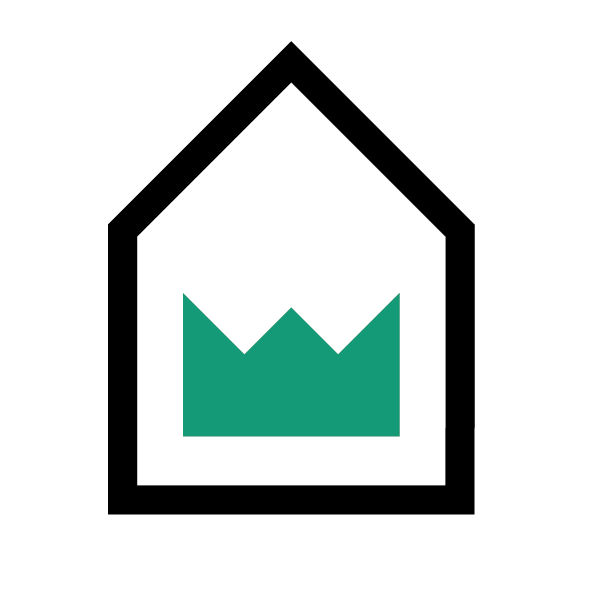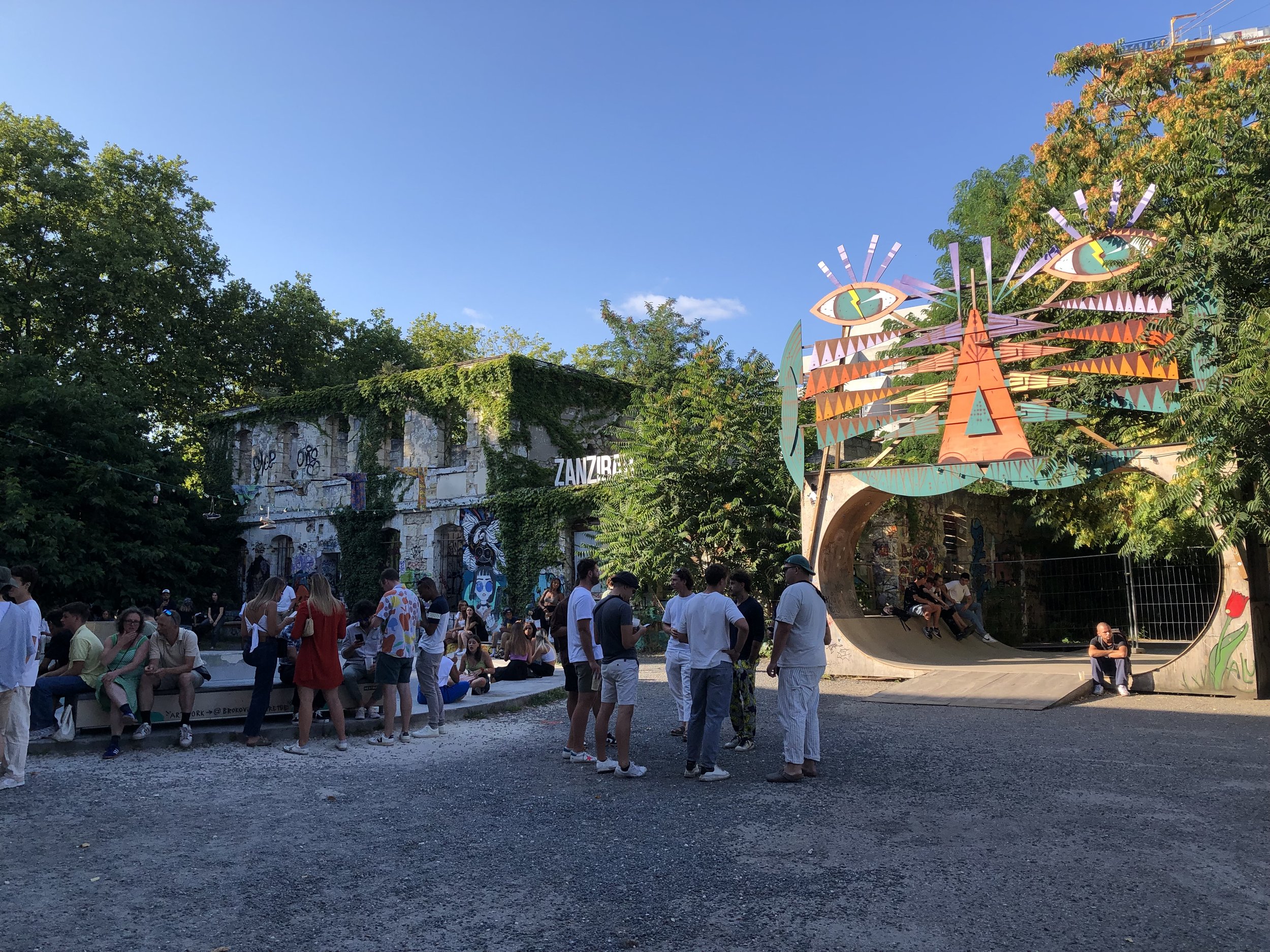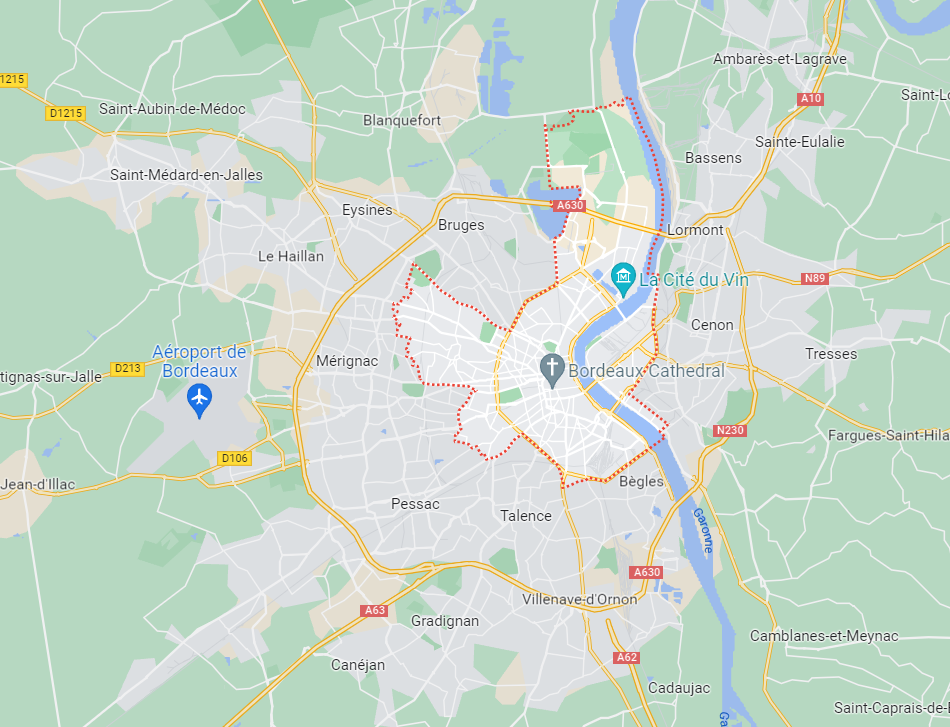Bordeaux: Building Beyond Wine
Salut! Ace here.
Bordeaux is a region that is known for their excellence in red wine, however when I visited this last summer, I made a concerted effort to explore the other sights of the region’s main city. What are the lessons that can be learned from one of the smaller cities of France that can be applied to towns and cities of all scales and sizes? Here are four lessons I learned from Bordeaux.
Just a few decades ago, this was a collection of empty buildings and parking lots
Riverfront Revivals Are Always a Winner
Le Miroir D’Eau
The redevelopment of Bordeaux’s riverfront came as part of a move of industrial uses away from the old docks of the city, leaving a number of empty buildings and warehouses sitting unused around a part of town that stayed fairly empty. Now, the riverfront boasts a collection of green spaces, shops and businesses, and cultural spaces that have revitalized the area and made the area one of the most visited and most exciting places to be in the city.
A water taxi which will take you to multiple points around the River. It also shows the connections to some of the main buses and tramways of the area.
The Riverfront is now home to not just the ‘Miroir D’Eau,‘ the largest reflection pool in the world, but also includes a number of spaces that are specifically made for locals. This includes a collection of small gardens where you can find both native plants as well as produce being grown along the banks of the Garonne. In addition, by not just providing a wide variety of programming but including both a pedestrian track that runs the length of the redevelopment along with a water taxi that takes you between points along the river, Bordeaux has provide an expansive public space that is easily accessed by anyone at any time of year.
A collection of local gardens right along the riverfront
Creating a stunning new open space for citizens in your town or city can be attractive, but it’s also important to ensure that people can easily get there and access all parts of the development. This is what sets Bordeaux’s design apart from redevelopments like Seattle’s own waterfront.
A typical Bordeaux lane
Active Transportation Activates People
A group of ladies biking casually along protected bike lanes
Something that really surprised me while in Bordeaux was the emphasis on active sports: there are a number of shops and businesses that specifically cater to surfing, skateboarding and inline skating, even cycling. In many ways, this coupled with the wide paths provided along the riverfront make getting around the city by bike both encouraged and enjoyable. Those wide paths, in tandem with narrow roads and low speeds for vehicles, means it’s safe to take a bike nearly anywhere across the town.
The Pont de Pierre, a vital connection between east and west Bordeaux
Overall, providing alternatives to driving and giving those alternatives the space to be useful as well as the space to be safe means that people will choose those alternatives when possible. Including connections, like the Pont de Pierre, and making them only available to transit and pedestrians (along with emergency vehicles) means more people will chose those options because it will get them to their destination that much more quickly.
The Darwin Project from its main entrance
Reusing What You Have Works Wonders
The sustainable tenets of The Darwin Project
There most definitely has been a resurgence of adaptive reuse in architecture over the last decade, and Bordeaux is no stranger to that. In many ways, it’s something that not only revitalizes formerly distressed buildings, but can serve a catalyst for neighborhood revitalization.
The skate park and additional hangout area
In the image above you see The Darwin Project.
An adaptive reuse project of former barracks, this institution has become an adaptive ecosystem all its own. The space comprises a multitude of uses, including a skate park, bistro, music venue, even urban farming plots. Overall the design and operation of the space emphasizes sustainability and circular loops that bring together a diverse community of locals and creatives in a way that truly gets at the heart of regenerative design. It also is one of the most visited spots in the city by locals and visitors alike.
In many ways, what The Darwin Project is doing is taking the idea of adaptive reuse, arguably the most sustainable of architectural practices, and turning the volume up to 11. It’s a model I think more cities and neighborhoods should take in creating sustainable architecture that then grows into resilient neighborhoods.
One of the main Plazas of Bordeaux, just outside the local Opera
Plazas Pay Off Every Time
When it comes to having people living and working close together, the things that (ironically) brings people together are plazas. Whether during the day or at night, the plazas of Bordeaux serve as these centers of interaction and spaces for taking a beat between shops or after a delicious dinner.
What makes them work even better is the removal of vehicular streets: in a number of locations you had multiple buildings frame the plaza, creating a sense of comfort and safety that allows people to feel comfortable with taking time to rest, relax, reflect, and recreate.
For many US cities, the best ways to implement plazas are either by pedestrianizing an existing street or by including them in a new building development. With the latter, by emphasizing a variety of uses around an open space, one can energize even the smallest of courtyards to be a place that brings people together.
Whether day…
…or night, the plazas of Bordeaux are filled with locals and tourists alike.
The Bordeaux city area in comparison to its much larger metro
Sustainability Versus Sprawl
An important lesson to be learned to be reminded of with Bordeaux is that although a core city can be doing all the right things for sustainable city living, if you have a sprawling metro then a lot of that good work is canceled out.
The core city of Bordeaux is home to 260,000 people at a density of 14,000 people per square mile, whereas the metropolitan area of Bordeaux is home to just over 994,000 people at a density of just 2,000 people per square mile. (for comparison, Seattle’s density is just over 3,600 people per square mile)
In many ways, some of the more car-dependent aspects of the metro are actively working against the larger wine–based economy the region is dependent on: climate change plays a direct impact on the health of soils and each tick in increasing temperatures means the success of future crops is put in jeopardy. That being said, if the concepts I’ve described above are put into practice not just in Bordeaux, but in cities across the world, a shift to more sustainable urban environments means the protection of what Bordeaux is best known for.

















